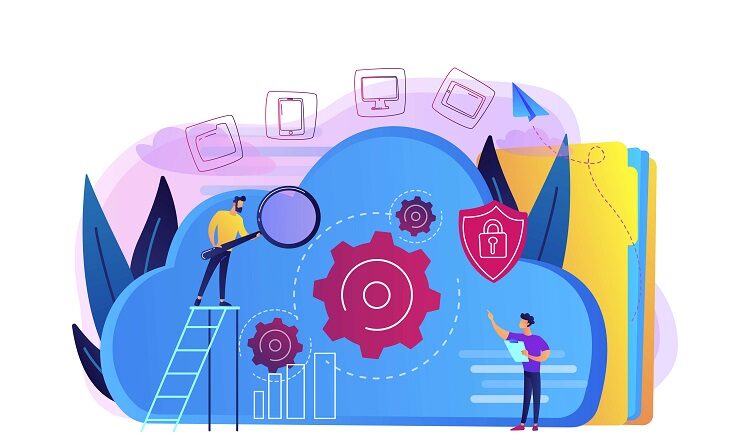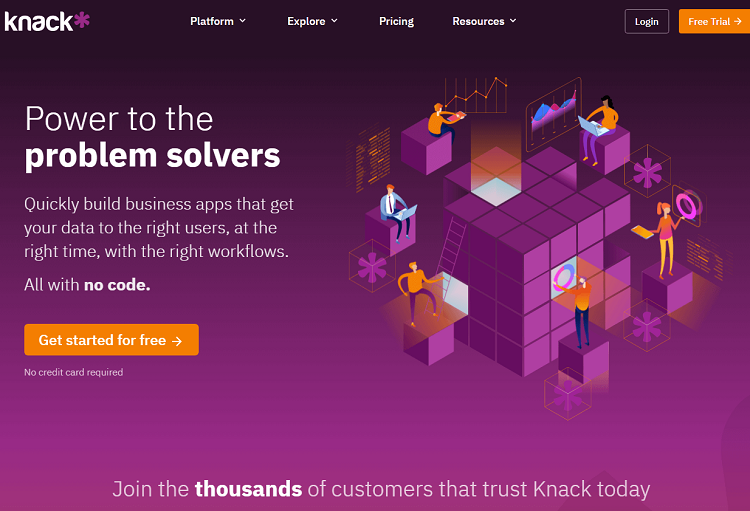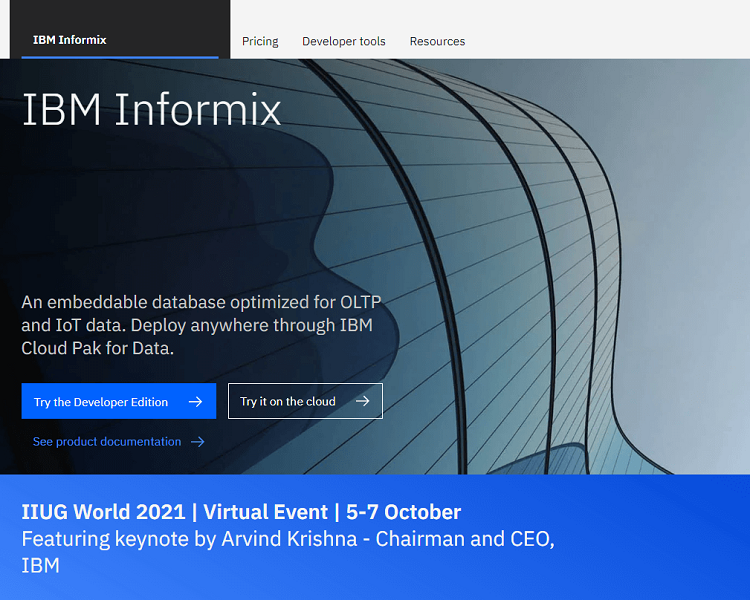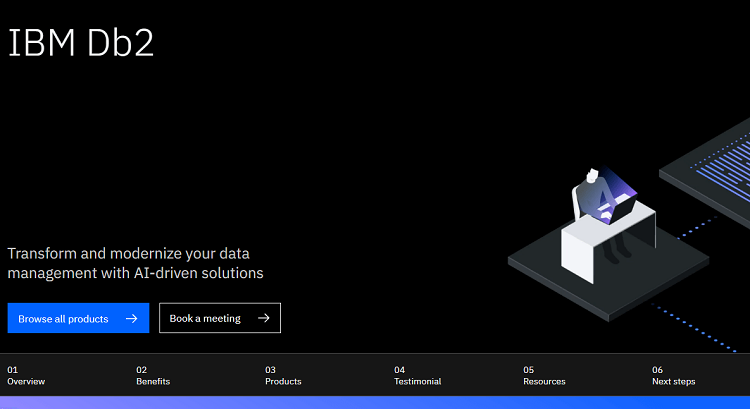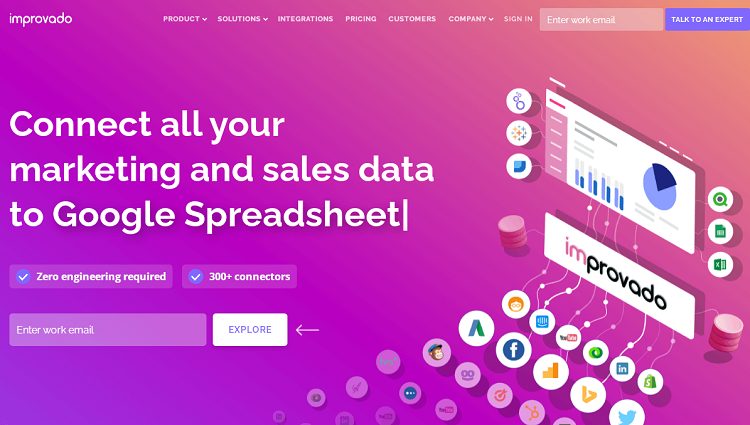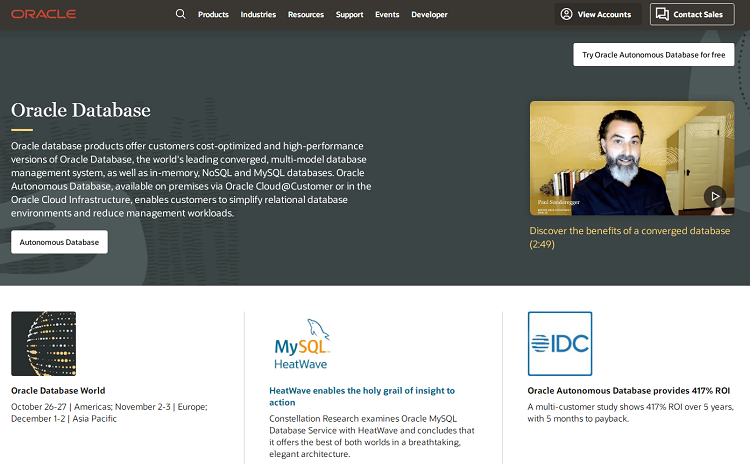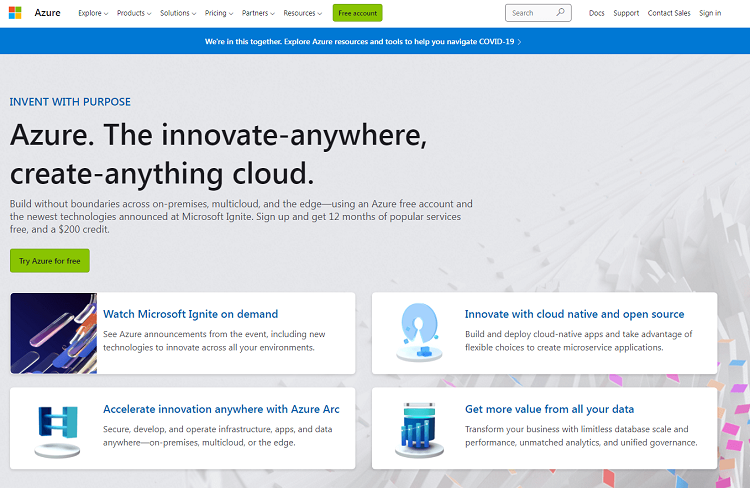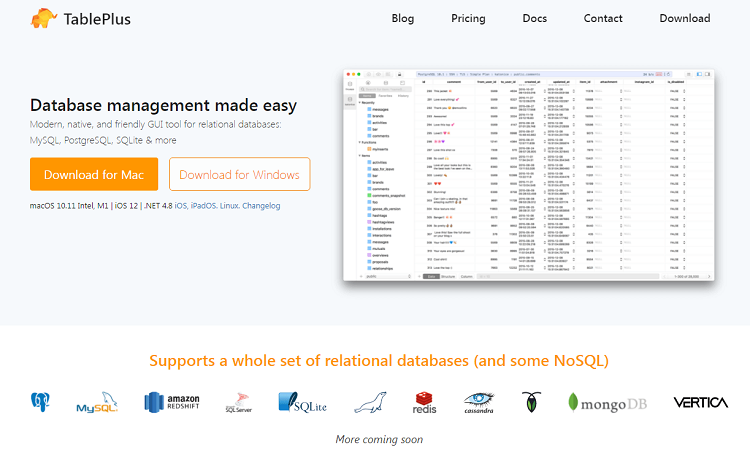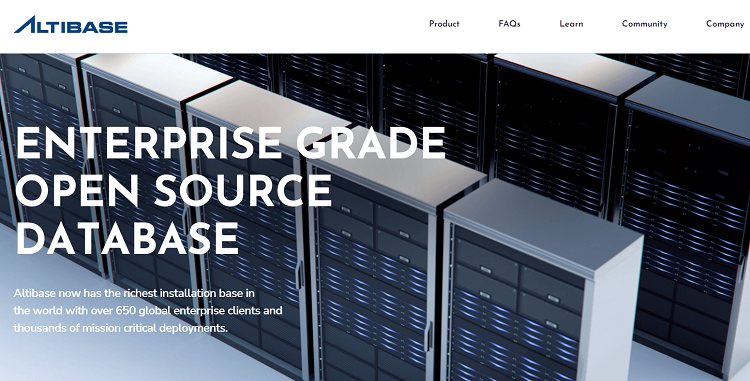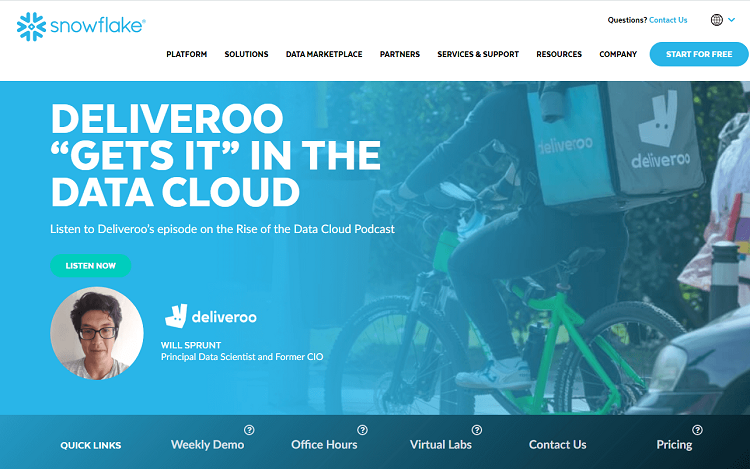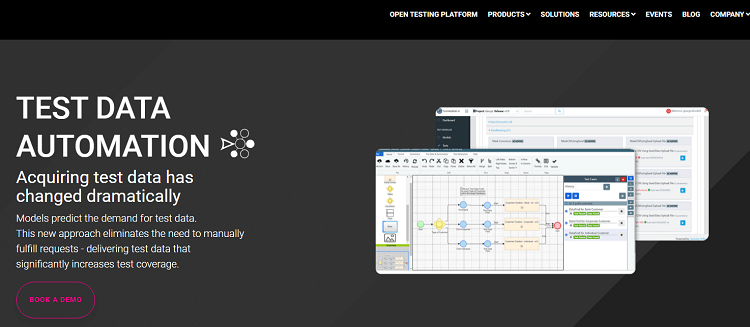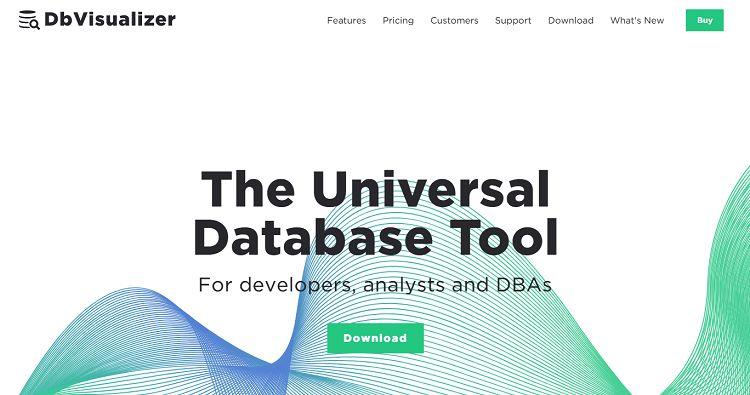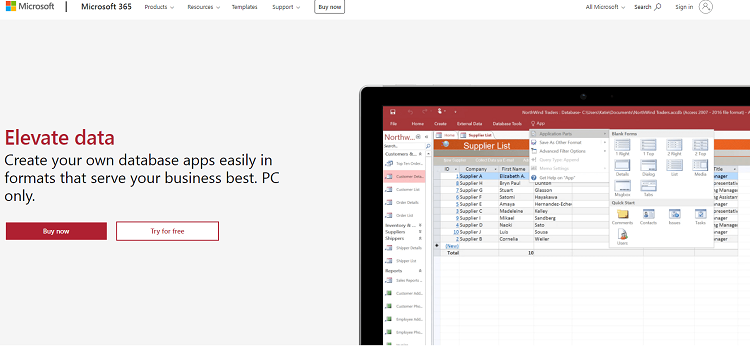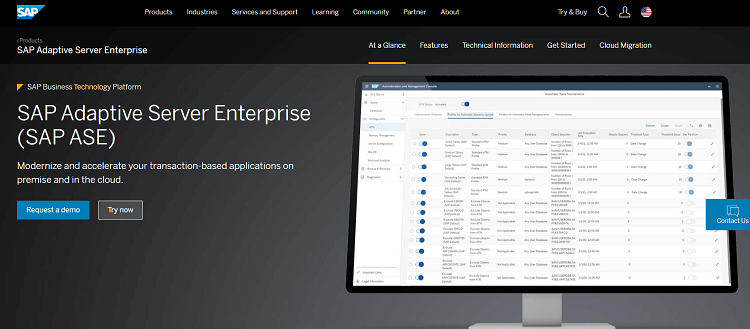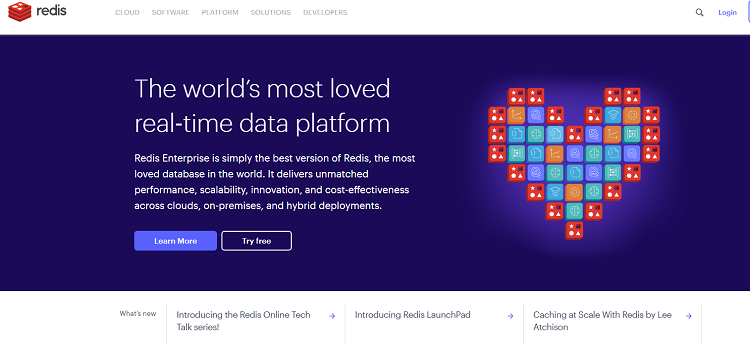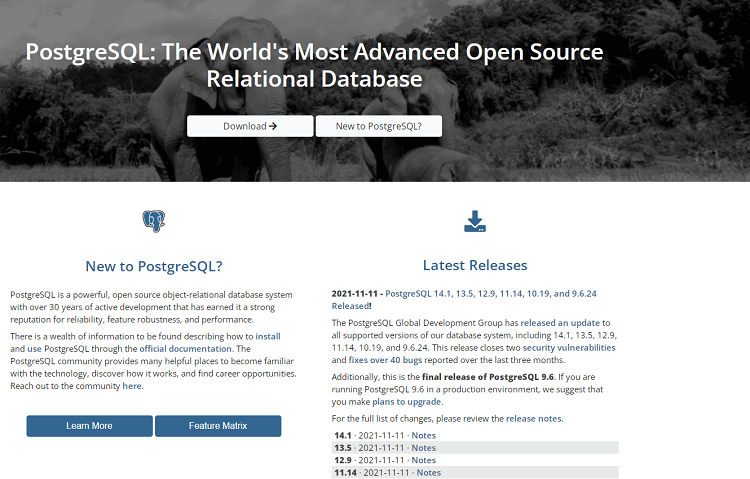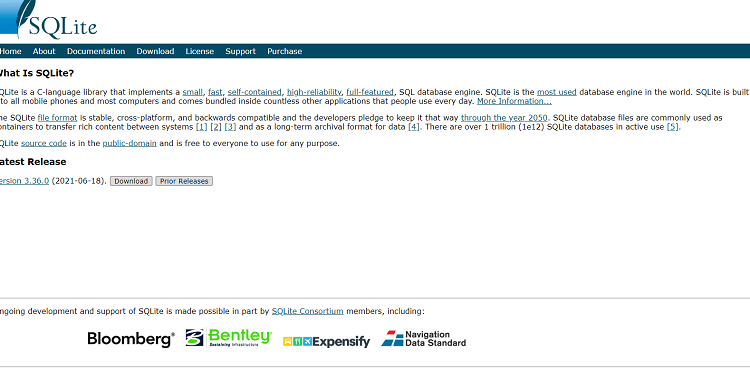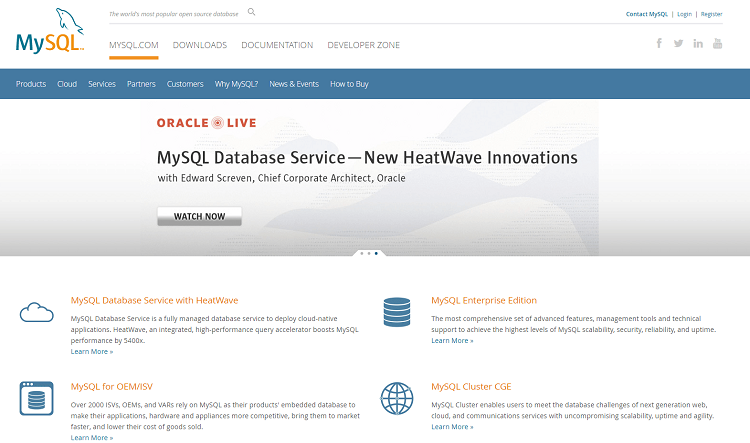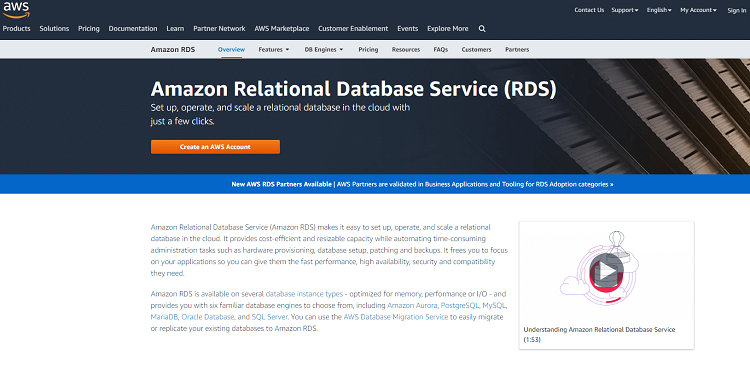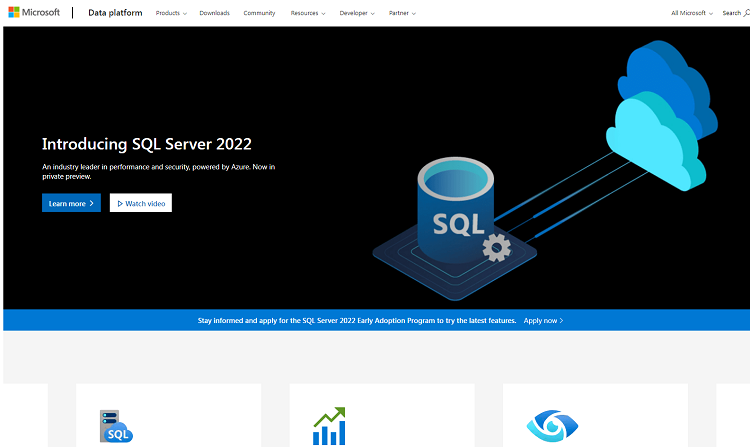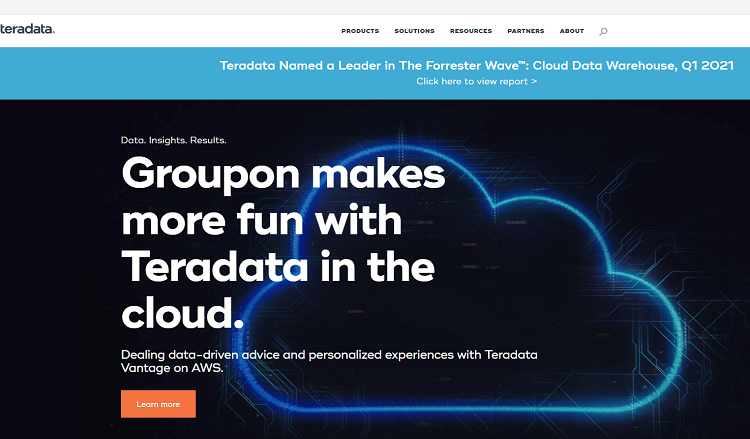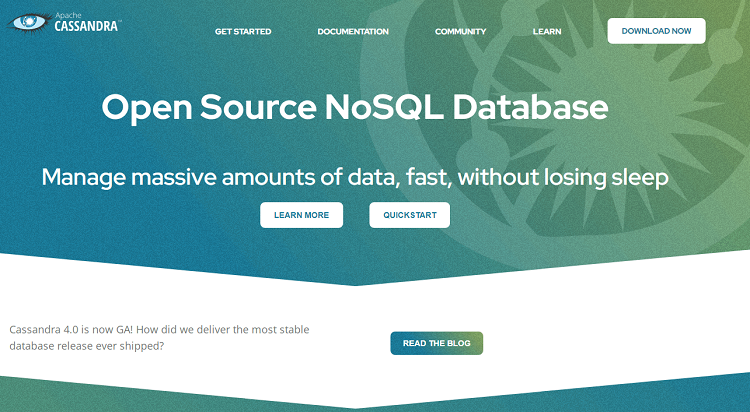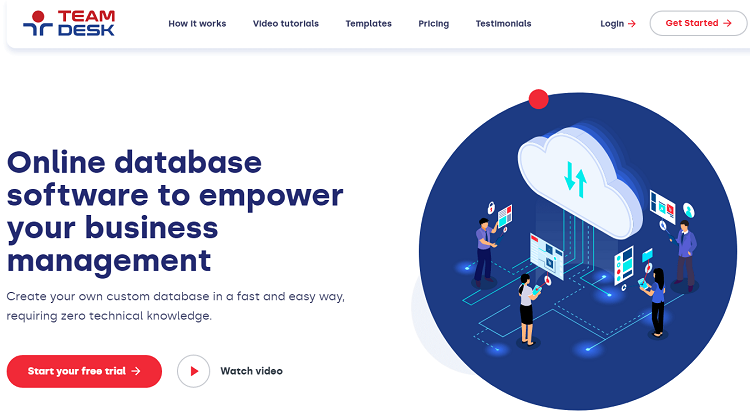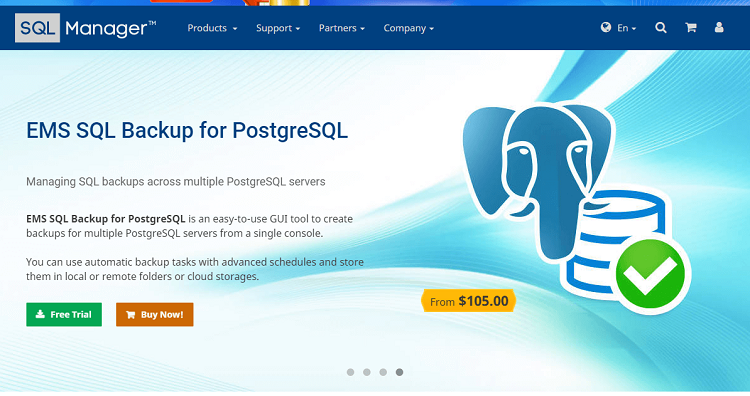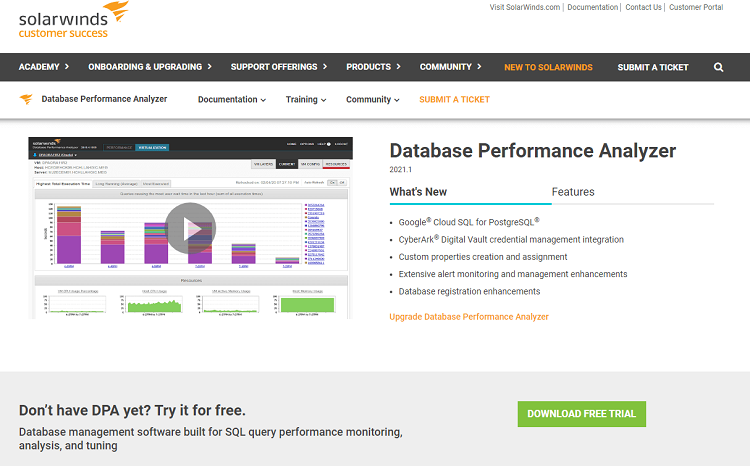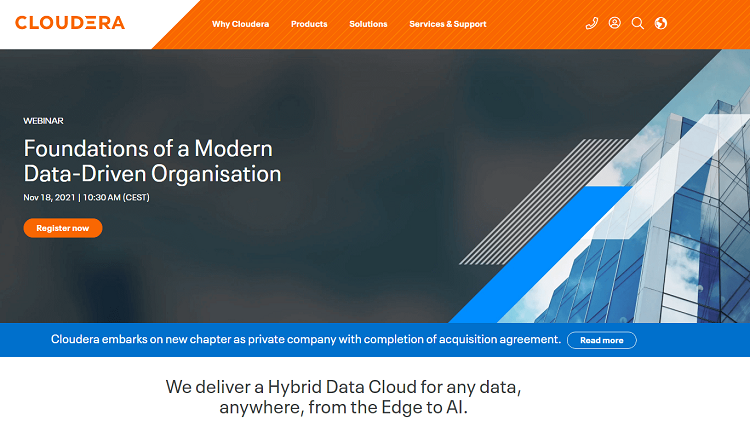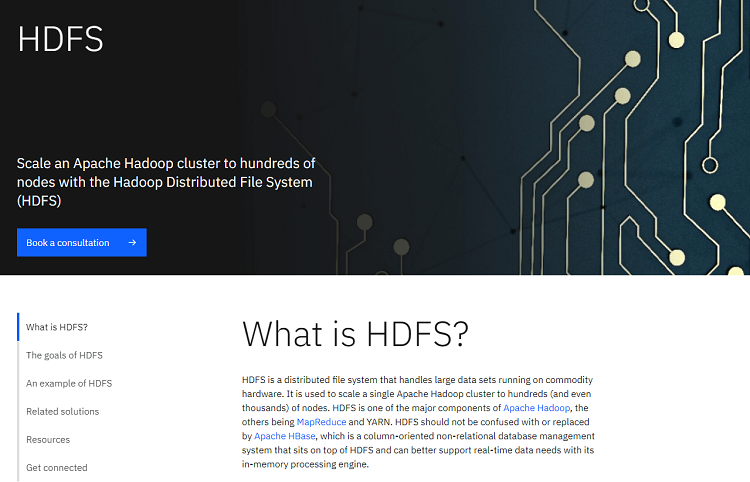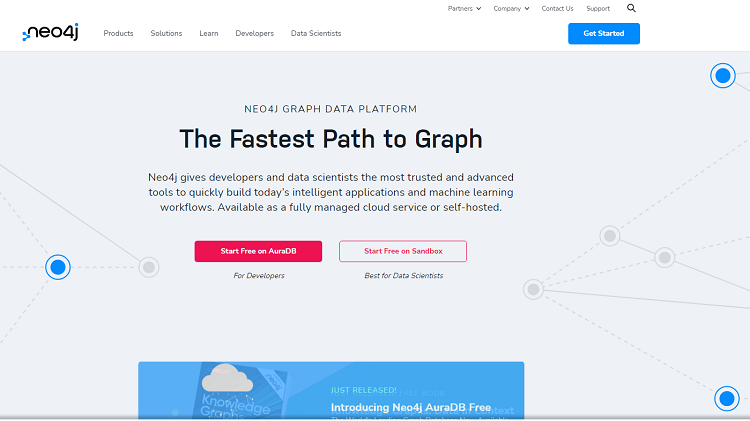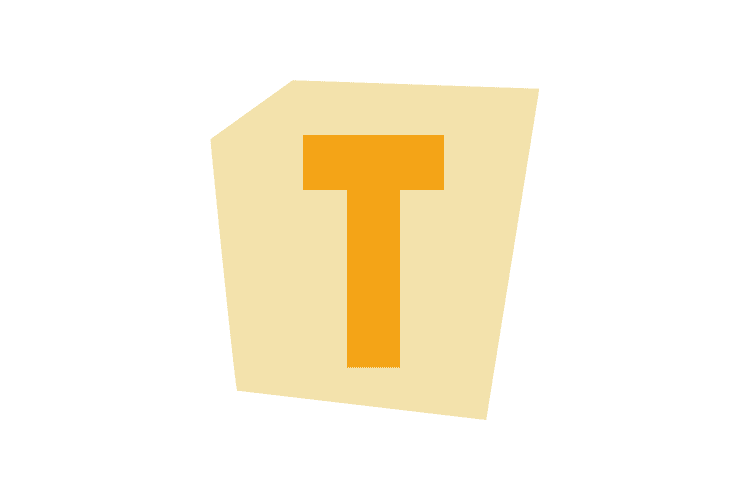Databases are not a part of any programming language, so they need to be managed using special software. In the post below, we will take a deep dive into the world of databases and software solutions used to manage them.
What Features Are Important in Database Software?
Intuitive users interface (UI); Easy access to all the information; Top-tier security and multiple users support; Low repetition and redundancy; Backup and restore feature.
Best Database Software and Systems 2023
Do you want to learn more about databases and database management systems available on the market? Look no further! Scroll down below and read about the most popular database software and systems. Also, we have highlighted the benefits and drawbacks. Database Developers are responsible for the integrity, performance, and security of databases. They are often also involved in planning, developing, and troubleshooting databases. Hire a Dedicated developer who creates and constructs computer programs that run desktop computers, mobile gadgets, and even automobiles. Along with identifying customer demands, they develop new applications for any market and make adjustments based on user feedback.
Knack – Best Database Software for Non-Technical Users
It is a great database tool for those who want to create a comprehensive online database without editing even a line of code. Knack offers simple tools that help transform raw data into an easy-to-use database hassle-free. Also, it foresees the ability to connect data and apply different formulas and equations.
Key Features
Centralized workflow; Code-free environment; Regular updates; Ready-to-use templates.
Pros
Digital signature; Quick search; Support of maps and calendars; Detailed reports;
Cons
No desktop database application; No phone support; Lack of customization features.
Prices and Packages
Free 14-day trial; Starter: $39 per month; Pro: $79 per month; Corporate: 179$ per month; Corporate Plus 1 plan: $299 per month; Corporate Plus 2 plan: $499 per month; Corporate Plus 3 plan: $999 per month.
IBM Informix – Best Cross-Platform Database Software
Informix is an Enterprise-class database management system suitable for data management in small, medium, and large businesses. It is a reliable and high-speed software solution. It supports almost all known server platforms.
Key Features
Convenient-to-use dashboards; Supports a large number of data types; Multi-threading architecture;
Pros
High performance; Scalable database solution; Easy to maintain; Highly embeddable.
Cons
Complicated pricing policy; Slow customer care support.
Prices and Packages
A free plan is available; Sales managers should be contacted to get pricing details.
IBM DB2 – Best Database Programming Software
IBM DB2 is a database management system manufactured by IBM Corporation. It is one of the best software solutions for databases in the world. It is a leader in performance, scalability, etc. The IBM DB2 product is enhanced with support for object-oriented functions and non-relational structures with XML.
Key Features
Unique authentication model: there are no internal users; Support of data compression when backing up; DB2 Text Search feature.
Pros
Powerful query language framework; Support for multiple platforms: Windows, Linux, macOS, and others; Self-tuning memory management; Good IBM product support; Exceptional performance and great stability.
Cons
Paid customer support after three years; Poor users interface, compared to competitors; The size of a database is limited to 15TB.
Prices and Packages
Community Edition: Free version; Standard and Advanced Editions: Sales managers need to be contacted.
Improvado – Best Database Software Managing Marketing
It is an online data collection system that allows users to connect to various marketing systems and complex data visualization platforms without reaching skilled specialists. The platform was created by marketers for marketers.
Key Features
Automated Marketing Panel; Customizable data; Multiple integrations; Plug-and-play solution.
Pros
Easy to use and flexible; Powerful client platform; Integration with Google Sheets and Google Analytics; Parallel data comparison; Social media integration.
Cons
Unclear pricing policy; Lack of features for experienced users.
Prices and Packages
Prices are formed according to the needs of customers.
Oracle RDBMS – Best Multi Database Management System
It is a relational database management system created by Oracle company. It can manage large amounts of data in a multi-user environment reliably. Consequently, many users can access the same data at the same time.
Key Features
Fast and reliable data management; It can be used for almost any type of database system; Fast and hassle-free data retrieving.
Pros
It keeps high performance even when is scaled; Uses SQL language; Easy-to-grasp documentation; Great backup and recovery features.
Cons
Not ideal for developing custom solutions; New updates are hard to deploy.
Prices and Packages
Standard Edition 2: $350; Business Edition: $950; Personal Edition: $460; NoSQL Database Business Edition: $200.
Microsoft Azure – Best Database Software Enterprise IoT Data
It is one of the top solutions for those who need to store and process large amounts of data in the cloud. In a nutshell, it is a scalable relational database service designed especially for the cloud by Microsoft company. Therefore, it is perfect for middle-sized enterprises that work both physically and online.
Key Features
Availability; Virtualization technology; Scalability; Ease of use.
Pros
High database performance and low downtime; Ability to pick a country to store data in; SQL support; Live-time monitoring.
Cons
Sudden discounts; Poor user interface; Lack of professional support.
Prices and Packages
Basic: $0.0068/hour; Standard: from $0.0202/hour to $6.0488/hour; Premium: from $0.6251/hour to $21.5054/hour.
TablePlus – Most User-Friendly Database Software
It is a native application that helps easily edit unstructured data and database structure. TablePlus includes many security features to protect users’ data. It is designed to simplify database management and reduce maintenance costs.
Key Features
Easy-to-use interface; Back-up, recovery, import, and export features; 7-day money-back guarantee; Supports macOS, Windows, and iOS.
Pros
Encrypted connection between databases and the interface. SQL wizard and pre-made templates; Queries are easy to format; A confirmation is required before executing a request.
Cons
A limited number of features in the free version; Sometimes requests do not get executed without any notifications.
Prices and Packages
Free version; Paid version: $69 per year.
Altibase – Best Database Software for Big Data
Altibase is the only hybrid database in the industry that seamlessly combines the memory and a disk into a single database product, using the only interface that simplifies data processing to achieve maximum efficiency.
Key Features
Free to use; Simple SQL code migration; High bandwidth; Flexible and easy to use.
Pros
Low latency and efficient indexing; Rich set of features; It can replace or work with Oracle database; Low response time; Low maintenance costs.
Cons
Global indexes are not supported. It does not support Windows Server and client. No User Interface management tool. It does not support mobile access.
Prices and Packages
Free to use.
Snowflake – Easiest Database Software
It is a high-performance columnar database management system that supports standard SQL and is ACID compliant. Data can be accessed using Snowflake Web UI or Snowflake Client command-line interface.
Key Features
Simple solutions for beginners; Drag-and-drop interface; A large number of integrations; Data-sharing; Cloud-hosted.
Pros
Easy-to-use interface; Ability to undo some accidental requests; Fail-safe architecture; Multi-thread processing; It can be easily scaled.
Cons
Lack of transparency on performance; Poor documentation; Unintuitive for experienced users.
Prices and Packages
Depends on computing power and time spent. The company uses an internal billing database system that utilizes credits.
Test Data Automation – Best Database Software for Research
It is a secure and convenient database management software developed to help software engineers tackle testing faster. Since the “Agile” method needs developers to iterate testing many times, the database software helps automate data-driven testing to boost performance.
Key Features
Ability to generate missing data; Defect detection; Parallel provisioning feature; Missing data generating.
Pros
Ability to remove repeated rows; The application programming interface (API) is available; A large number of third-party applications integrations.
Cons
No Mac support; Unintuitive interface.
Prices and Packages
Users need to request custom quotes.
DbVisualizer – Best Database Software for Developers
This product is a multifunctional tool for developers and administrators that supports database management systems from Microsoft, Oracle Database, Sybase, and IBM. It is written in Java, so it works on almost any platform and is very easy to set up and use.
Key Features
Multiplatform solution; Easy-to-Use Interface; All users data is encrypted; SQL queries autocomplete.
Pros
Fast processing of queries; Quick exporting actions; Most common databases are supported; Visualization of database relations; Performance reporting.
Cons
Confused navigation; The database app crashes sometimes; Autocomplete feature is not presented; Poor user interface design.
Prices and Packages
Free version; Pro version: $197 per year; Pro version with support: $229 per year.
Microsoft Access – Best Database Record Software
It is a database management system from Microsoft. The main purpose of this software is to create and work with multiple databases that can be tied to both small projects and large businesses. With its help, it is convenient to manage data, edit, and store information.
Key Features
A high level of versatility of the interface; Great possibilities of integration with other software products; Rich set of visual development tools; Wide possibilities for the import and export of data in various formats.
Pros
Simple graphical interface; All data is stored in one file; Constantly updates are released by the manufacturer; Friendly logic for users with different technical backgrounds; Built-in macro language.
Cons
Limited opportunities to establish a multi-user environment; Poor security tools; A large number of limitations (size of databases, number of rows, etc.)
Prices and Packages
$139.99 per PC.
SAP ASE – Best Database Software for Large Data
Adaptive Server Enterprise (ASE) is a high-performance RDBMS for mission-critical data-intensive environments. The database system provides operational efficiency and throughput while supporting a wide range of platforms.
Key Features
Delivers extreme performance; Protects information systems from common threats; Simplifies database administration tasks.
Pros
Live monitoring; Lock management; High performance and reliability.
Cons
Complicated licensing; Full database encryption; The user interface is not friendly and sleek.
Prices and Packages
All users get personal quotes from sales managers.
Redis – Best Open Source Database Software
The Remote Dictionary Server known as Redis is a high-performance open-source database (BSD license) that stores data in memory, which is accessed by an access key. Redis provides sub-millisecond response times and enables real-time applications to execute millions of requests per second.
Key Features
High performance; Redis is very simple; Access to the server can be password protected; Open-source database.
Pros
Convenient query and data formats; High availability and scalability; Simple backup and restore features.
Cons
Windows is not officially supported; No ability to create different users or user groups.
Prices and Packages
30-day free trial; Annual payment depends on the number of databases needed.
PostgreSQL – Best Database Development Software
PostgreSQL is one of several free and popular database management options, often used to maintain databases of websites. It can be used on most major platforms, including Linux. Perfectly copes with the tasks of importing information from other types of databases using its own tools.
Key Features
Support for a database of unlimited size; Powerful and reliable transaction and replication mechanisms; The expandable database system of built-in programming languages.
Pros
Scalable and capable of handling terabytes of data; Supports JSON format; There are many predefined functions; A large number of user interfaces are available.
Cons
The documentation is poor, so it’s hard to find answers sometimes; The configuration can be confusing for users without technical background; Performance can be slowed down during high loads.
Prices and Packages
PostgreSQL is shared for free.
SQLite – Fastest Database Software
The database is easily embeddable into applications. Since this database system is based on files. SQLite is very fast and powerful. It provides an excellent set of tools for the easier processing of any kind of customer data.
Key Features
File-based database architecture; Standardized SQL functions; A great solution for development and testing; Allows users to store all data in one file.
Pros
Great performance; Accessibility; Reduced application cost; High level of reliability.
Cons
No multi-user functionality; Inability to increase productivity.
Prices and Packages
No free version and trial; $2,000 per license.
MySQL – Best Database Software for Most
MySQL is one of the best database software on the Internet today. This system can work with a large amount of data. Nevertheless, MySQL is ideal for any type of online project, regardless of its size. Also, It has one important characteristic that attracts a lot of people. It is free database software, so users can utilize top-notch software at no charge.
Key Features
Simplicity thanks to source code editing; High performance; A lot of resources for developers; Data encryption and the multi-user feature.
Pros
Perfectly documented; Offers many features; Supports user interfaces; Can work with other databases.
Cons
Needs a lot of time to make simple requests; There is no native XML or OLAP support; Customer care support is paid.
Prices and Packages
MySQL is distributed for free.
It is a web service for creating, implementing, and scaling a cloud database. It is a simple, cost-effective, and standardized way to manage common database administration tasks. Everything happens automatically, so users benefit by having a lot of spare time.
Key Features
Low cost of maintenance; Great scalability; High performance.
Pros
Ease of use for end-users; Minimal downtime thanks to core shifting technology; Automated control for efficient management.
Cons
Limited access for users; Lack of full root support; Complicated pricing policy.
Prices and Packages
Users need to use an online calculator to estimate the final charge.
Microsoft SQL Server – Best Database Interface Software
It is a relational database management system (RDBMS) developed by Microsoft Corporation. It is used to manage databases ranging in size from personal to large enterprise databases. The DBMS has a lot of advantages that make a lot of users choose it among a large number of competitors. A convenient-to-use SQL editor is one of the top features that attract a lot of users. Microsoft SQL is one of the most convenient solutions for end-users.
Key Features
High performance; Simplifies the work with large amounts of data; Helpful integrations; High level of security.
Pros
No programming language is needed to make requests; Can be installed on local servers, clouds, or even combined; Routine administrative tasks are automated; Microsoft SQL supports other companies’ products: Access, and MS Excel.
Cons
Supports Windows only Hard to use for beginners.
Prices and Packages
Express, Web, Developer: free; Standard – CAL: $209; Standard – server: $899; Standard – per core: $3,586; Enterprise: $13,748.
Teradata – Best Database Query Software
It is one of the popular relational database management systems that work on the AWS cloud. It is mainly suitable for building large-scale data warehouse applications. Teradata DBMS is a server for managing large databases that communicate with multiple clients. It’s a perfect solution for those who need to warehouse and analyze large amounts of data.
Key Features
Unlimited concurrency to distribute workload across the entire database system; Shared Nothing architecture; Linear scalability to expand a database fast; One dashboard for database administration.
Pros
Support for large amounts of information Automatic data distribution; Ad hoc request support; Reliable utilities.
Cons
Poor support for geospatial data; No perfect solution for small amounts of data.
Prices and Packages
Free demo; Small: from $3.08 to $5.48 per hour. Medium: from $3.35 to $9.51 per hour. Large: from $7.82 to $13.90 per hour. XLarge: from $10.71 to 19.04 per hour. XXLarge: from $15.65 to $27.82 per hour.
Cassandra – Best Database Schema Software
It is a non-relational DBMS tool that can be hardly broken. It is designed to build scalable and reliable storage of huge amounts of information. This database management system is a hybrid NoSQL solution because it combines a ColumnFamily storage model with the Key-Value concept.
Key Features
Great scalability and reliability; The read and restore feature; Flexible data schema.
Pros
High bandwidth; Native SQL-like language; Availability of tools for expanding functionality; Support for authentication and different users.
Cons
Strong requirements for uniqueness of keys; The search feature is not developed well; The internal query language should be learned.
Prices and Packages
Free to download.
TeamDesk – Best Database Software for Leads
TeamDesk is a web service that allows teams to easily create a web database application or use predefined solutions to collect, share and manage business information. It works in the cloud through its secure servers. The database management software works on PC, Macs, iPhones, and Android.
Key Features
A large library of pre-built templates; Low-code development service; Role-based user access.
Pros
GDPR compliance thanks to EU-based servers; Unlimited records and storage space; Top-tier customer service; Great flexibility in database management.
Cons
The user interface is not intuitive; Lack of integrations.
Prices and Packages
Starter edition: $49 per month; Team edition: $99 per month; Enterprise edition: $249 per month.
EMS SQL Manager – Best Database Software for Product Catalog
EMS SQL Manager is the most powerful complex for the development of database servers and their administration. It features support for all objects and data types. The EMS SQL Manager allows users to quickly and easily create and edit all database objects, visually design databases, execute SQL scripts, import and export databases, manage users and their privileges.
Key Features
Support for data encoded in Unicode; Fast navigation and database management; Effortless management of all the objects; Effective management of data and security settings.
Pros
Convenient data import and export Using a powerful visual database designer. Use simple wizards to complete administrative tasks. Access to other necessary tools for the SQL-server operation.
Cons
Lack of the automatic formatting feature; Poorly developed export manager.
Prices and Packages
Non-commercial use: $110 per year; Commercial use: $180 per year.
SolarWinds Database Performance Analyzer – Best Multi Database Management System
It is a SQL Server performance monitoring tool that helps identify the problems most dangerous to end-users. This one is a single tool for a database administrator, developer, and manager who needs to improve the performance of a SQL server cost-effectively and efficiently.
Key Features
Focus on response time; Data history analysis; Runs on any Windows, Linux, or UNIX server.
Pros
Less than 1% load on monitored servers; Supports Internet Explorer, Mozilla Firefox, and Google Chrome browsers; Automatic reports on a schedule are delivered by email.
Cons
Lack of in-depth analysis; Outdated user interface; Confusing navigation.
Prices and Packages
MySQL, SQL Server, and Oracle Standard Edition: $1,995; Oracle Enterprise Edition, DB2, and SAP ASE: $3,495.
Cloudera – Best Client Database Management Software
Worth noting that the key product is CDH (Cloudera Distribution including Apache Hadoop). It is a bundle of the most popular tools from the Hadoop infrastructure under the control of the Cloudera Manager. The manager takes responsibility for the cluster deployment, installation of all components, and further monitoring.
Key Features
A large number of features for both end-users and developers; Good performance; Skeek migration feature.
Pros
Great customer support; Frequent update release; Great documentation; Central configuration and control.
Cons
Not an open-source solution; Compatibility issues on Mac.
Prices and Packages
Shared cloud: from $0.07 to $0.30 per cloud capacity unit. Private cloud: from $400 per cloud capacity unit + $25 per TB.
Hadoop HDFS – Best Database Software for Video Storage
HDFS (Hadoop Distributed File System) – Hadoop distributed file system for storing large files with the ability to stream information. It can be used as a general-purpose distributed file system, providing distributed DBMS software and scalable machine learning systems.
Key Features
The large block size for good performance. Mirroring and replication of data for secure processing; Self-diagnosis to keep the database system up and running.
Pros
Users can read and write HDFS files directly; Data compression and efficient use of disk space; HDFS optimized for streaming.
Cons
Lack of support for relational data models; The name server is the central point of the entire cluster.
Prices and Packages
Free licensing.
Neo4j – Best Database Software for Java
It is an open-source graphical database management tool implemented in Java. These days, it is considered a leader among this type of database. The DBMS uses its own query language, Cypher. Nevertheless, queries can be made in other ways.
Key Features
Shows relationships between different data points; Supports Java, Python, PHP, or NodeJS and other popular coding languages; No performance issues, even for very large amounts of data.
Pros
Easy to import and add data; Simple interface; It is very easy to install; Interactive UI for analysis.
Cons
Slow data processing; No multi-user solution; Used space is not displayed.
Prices and Packages
Free licensing.
What is the most popular database software?
According to many reviews, Oracle RDBMS, also known as Oracle Database, is the best DBMS thanks to many great features. The system is popular with developers, is easy to use, and has clear documentation. Moreover, it supports long names, JSON, improved list tags, and Oracle Cloud.
What is the most popular type of database used today?
A relational SQL database is the most popular type used today. If you’ve ever worked with databases, chances are you started with this type because it is the most popular and widespread. Such databases allow you to store data in relational tables with specific columns of a specific type.
What does database software allow?
A database management system allows users to combine large amounts of information and process them, sort them, make selections according to certain criteria, etc. Modern DBMS makes it possible to include text and visual information, sound fragments, and even video clips.
What are the most popular brands of relational databases used in business today?
Oracle is the most preferred customer database software. It is a market leader in the niche with a market share of 50%. It is the result of constant innovation and the high achievements of a relational database management system (RDBMS), which is useful in storing data in files and tables.
Can most databases import data from other software applications?
Almost all databases can import data from different files. Also, users can import new information with the help of requests. However, most databases can integrate with different applications to gather data automatically, which helps users build comprehensive systems for collecting and analyzing information.
What are the advantages of database software?
Databases allow users to store and retrieve large amounts of information. They facilitate data entry and storage. Computerized databases erase a large number of limitations, allowing a seemingly endless amount of digital data to be stored. Besides, they help operate all the data and analyze it seamlessly.
What are the trends related to database software?
Over the past year, the maximum growth in popularity was demonstrated by databases based on temporary data. Although this is a relatively new approach, it is also considered NoSQL. The advantage comes down to creating a structure based on dates or time ranges.
Is there a free SQL database?
Sure! Moreover, there are a lot of free SQL databases, so you can choose one that fits your needs. Nevertheless, the most popular one is the MySQL database. Worth noting, MySQL is owned by Oracle company. However, it remains a dedicated database that offers free licensing.
Can I create my own database?
Technically, you can create your own database if you want to do so. However, it is an advanced piece of software. If you don’t want to use the solutions already presented on the market, you will need to gather a large team of software developers and have a vast budget.
Does Google have a database program?
These days, there are no ready-to-go solutions from Google. Most users who want to create databases using Google applications use Google Sheets and Google Apps Scripts. It needs users to spend a lot of time learning how to use the services and build reliable algorithms.
Conclusion
Summing up, a database is an organized structure designed to store, modify, and process interconnected information, mostly large volumes. A database management system is a set of software tools needed to create a new database structure, fill it, edit content, and display information. The most common databases are MySQL, PostgreSQL, Oracle, and Microsoft SQL Server. Nevertheless, there are a lot of different databases, database management systems, and additional software that help manage and analyze information in databases. Moreover, all of them are tailored according to particular needs. Consequently, they have different benefits and limitations. Using the information from the post above, you can learn more about their peculiarities to find one that matches your needs. About
